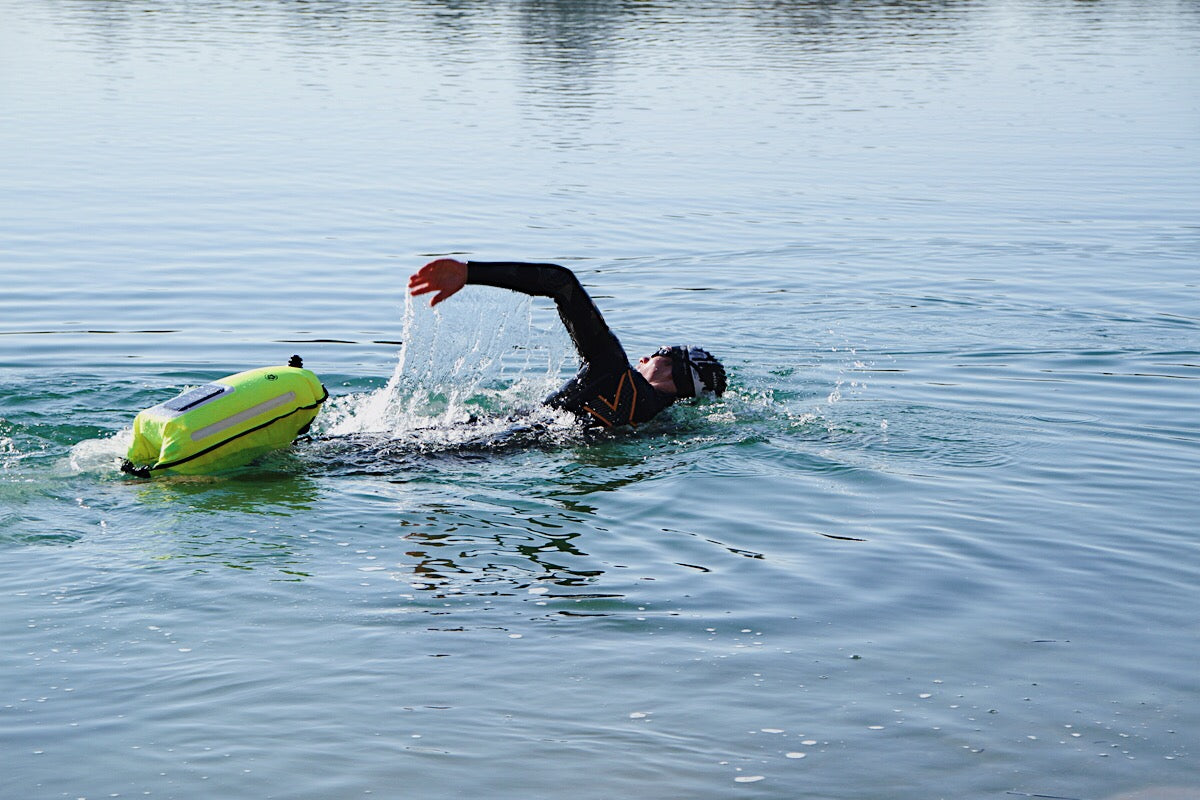Triathletes tend to do relatively high training volumes. Not just because they have to train in three sports at the same time. You probably know sayings like “a lot helps a lot” and “nothing comes from nothing”. Regeneration seems to have little place in this world. So the question arises, why do we actually need regeneration?
Through training/exertion we experience fatigue/reduction in performance. In the recovery phase, the body not only restores the initial state, but performance increases beyond the original level. This effect is called supercompensation.
We only get better during the break
Without regeneration (= recovery phase) there is no increase in performance. In other words, the increase in performance does not take place during training, but during the recovery phase.
Don't get us wrong: Training without regeneration does not lead to an increase in performance. But of course regeneration without a training stimulus does not lead to an increase in performance. Stimulus and regeneration must therefore go together. Of course, the devil is in the details and, as so often, the topic of “individuality” comes into play.
When and how much regeneration does the triathlete need
Basically, we have to regenerate after every training session. Depending on how long and intensive the training was, and how strong the athlete's previous load was, the regeneration time must be shorter or longer.
In addition, there are some athletes who can recover very quickly and others who take a relatively long time to recover. The regeneration time is also related to age: the older an athlete is, the longer the break is until the body has recovered. So it makes no sense to make a blanket statement here. You should test this important point consistently.
An important indicator for recovery can be the resting heart rate in the morning. To do this, it must be measured as regularly as possible and always at the same point in time. Larger upward deviations can then be indicators of insufficient regeneration or a virus.
Training condition is a decisive factor
Furthermore, the regeneration time is also influenced by the training condition of the athlete. This means: Depending on how good your own fitness is, the same load can be coped with better or worse.
The topic of regeneration and adaptation becomes particularly tricky when you look at how quickly different systems in the body recover from stress. The adjustment time of the energy supply systems ranges from a few seconds to several hours. It takes weeks and sometimes months for ligaments, tendons and joints to adapt.
For our training, this means that we always have to plan times in which recovery and adjustment can take place. If we don't do this, it can lead to overtraining, injuries and illnesses.
Schedule breaks: micro, meso, macro
The training is divided into cycles. A cyclization can look like this, for example:
Two to three days of stress are followed by a recovery day (microcycle), two to three weeks of stress are followed by a rest week (mesocycle), and several mesocycles are followed by a recovery phase, which together form a macrocycle. At the end of a season, a long break of three to six weeks makes sense so that body and mind can fully recover from the exertions of the season.
What can regeneration look like?
As part of a performance diagnostics, the ReKom range (ReKom = regeneration and compensation) is determined, among other things. The training should take place in this heart rate range during the regeneration phases. This means that running, swimming or cycling training should be in the range of up to 55 percent of the heart rate at the individual anaerobic threshold (IANS).
A good addition are strengthening and stabilization exercises for the trunk muscles. You can also support regeneration with massages, a visit to the sauna or a hot bath.
Summary
- Without regeneration there is no increase in performance.
- Regeneration must be built into our training as an integral part.
- Training stimulus and regeneration must go together.
- Training is divided into cycles called micro, meso and macro cycles.
- Training during the regeneration phase should be in the ReKom range.
- Regeneration can be supported by stabilizers, massages and sauna.
- After a long season, it makes sense to give your body and mind a three to six week break.
- After the long break, you should lay the foundations for the new season.




















